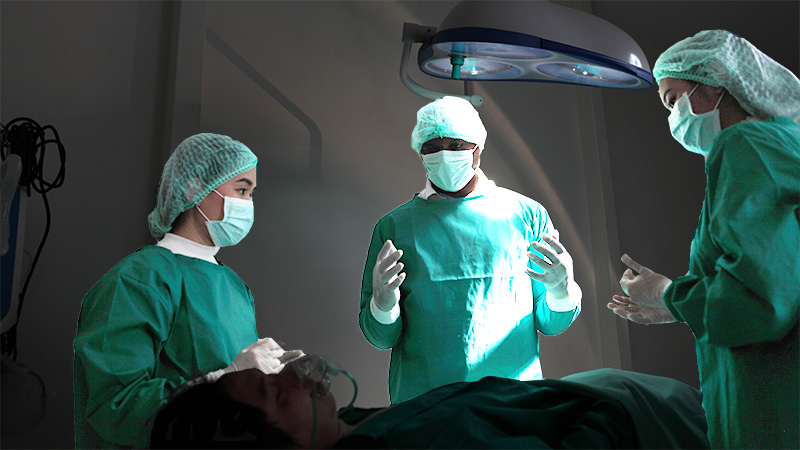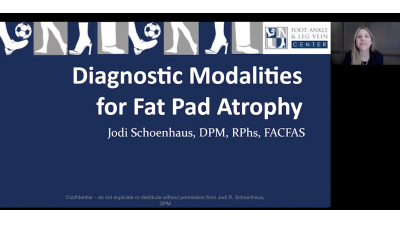
Practice Perfect 837
Feedback During Procedures
Feedback During Procedures

In last week’s issue, we discussed the One-Minute Preceptor, an effective method to give feedback in the clinic. As effective as this method is, it’s not so great for the operating room or giving feedback during procedures. But don’t fret, my friends, I won’t let you down! In fact, let’s talk about two rapid methods to provide constructive teaching to our trainees to help them learn during procedures of any kind.
The first thing we should state is that giving quality feedback during a surgical procedure can be very challenging. Surgery is already an intense undertaking in which the unexpected can happen, requiring a decent amount of focus. The stakes can also be very high, and mistakes are not tolerable. As such, it’s not surprising that teaching a new resident or student can get lost in the shuffle.
The second important – but maybe obvious – point is that providing feedback to our learners is helpful and valuable for their education. Grantcharov and colleagues found this to be true when they examined 16 surgical residents performing laparoscopic cholecystectomies1. This group was broken into eight residents that received direct feedback and eight residents who received no feedback. All 16 residents were then observed again doing the same procedure and evaluated for time to procedure completion and economy of motion scores. As you might imagine, the residents who received constructive feedback demonstrated significant improvements in these parameters, while the ones without feedback did not improve. Simple repetition without feedback just doesn’t work.
Third, it’s helpful to remember that there are two different types of feedback, formative and summative. Formative assessments are usually informal, given at the time of the procedure, and with an aim to help the learner improve. Summative assessments most commonly occur at the end of a rotation or class, are somewhat delayed, and tracked for a grade of some sort. Let’s keep our focus on formative assessment because that is where the real learning takes place.
Several methods have been studied in the education literature for giving feedback, but let’s focus on two methods used when teaching procedures. These are Peyton’s 4-Step method, and the BID tool.
Peyton’s 4-Step Method
Peyton’s 4-Step method goes beyond the classic “see one, do one, teach one” approach advocated by William Steward Halsted, the famous Johns Hopkins surgeon. Peyton’s method is as follows:
| Step 1: Demonstration | The teacher does the entire procedure in real time while the learner observes. |
| Step 2: Deconstruction | The teacher does the procedure again but slower and verbalizes each sub-step of the procedure. |
| Step 3: Comprehension | The teacher does the procedure again with the learner narrating or instructing what the teacher should do. |
| Step 4: Performance | The student does the procedure on their own, receiving feedback from the teacher. |
This method clearly wouldn’t work during a one-time surgical procedure but is excellent for workshops where there is leisure for the attending to demonstrate and later have the trainee do the procedure. For those surgeons who see their trainees regularly, this method may be a nice way to structure education over multiple exposures. For example, for a trainee that has never done a certain procedure, they would first watch the surgeon do the procedure. They might even modify this method by combining the first two steps, deconstructing the procedure while demonstrating the first time. The next time they work together, the surgeon performs the procedure while the learner narrates, and finally the learner does the procedure at the third sitting.
The problem with this method is the need for multiple repetitions, which may not be realistic for many learners, considering the variable exposure they receive to their proceduralists.
The BID Model
The BID model2 is another method and may be the most realistic of all options. This method was modeled after the 1-Minute Preceptor (the same method we discussed in Practice Perfect 836) but utilizing the time opportunities available surrounding a surgery, namely scrubbing before the procedure, and closing the incision at the end.
| B | Briefing – assess the needs of the learner through a short discussion at the scrub sink, pushing the learner to assess their own needs and create learning objectives. |
| I | Intraoperative – ongoing coaching may occur as normal, but the focus of learning is on those learning objectives discussed during the briefing. |
| D | Debriefing – while closing, focus on four elements: reflection, reinforcement, correction, rules*. Maintaining the focus on the learning objectives encountered during the procedure keeps this section short and concise.
|
*I changed the order of the debriefing components from the original paper to flow more naturally, with rules being more logical at the end as a take-away point for the learner.
Of the two methods, this one is my favorite because it has several advantages. First, it’s short and easy to remember without pulling the surgeon’s attention away from the patient and the procedure. Second, it focuses learners on specific goals, preventing them from becoming overwhelmed by feeling they will fail if they can’t do the procedure “skin-to-skin.” They’ve still learned something that they can apply to future procedures. Third, this method incorporates all timelines of the surgery itself, using the available time efficiently. It’s focused on the job training.
A 2013 study by Andersen, et al3 found a 250% improvement of completion of perioperative teaching by attendings over baseline after being educated using the BID approach. They also noted improved perceptions of faculty teaching by surveyed residents using this method.
I’ll close this discussion out with one last feedback mnemonic, which may be well known to many. No matter what feedback method is used, that feedback should be SMART, as in…
Specific
Measurable
Actionable
Relevant
Time-Limited
Best wishes.

Jarrod Shapiro, DPM
PRESENT Practice Perfect Editor
[email protected]

-
Grantcharov TP, Schulze S, Kristiansen VB. The impact of objective assessment and constructive feedback on improvement of laparoscopic performance in the operating room. Surgical Endosc. 2007 Dec;21(12):2240-2243.
Follow this link -
Roberts NK, Williams RG, Kim MJ, Dunnington GL. The briefing, intraoperative teaching, debriefing model for teaching in the operating room. J Am Coll Surg. 2009 Feb;208(2):299-303.
Follow this link -
Anderson CI, Gupta RN, Larson JR, Abubars OI, Kwiecien AJ, Lake AD, Hozain AE, Tanious A, O’Brien T, Basson MD. Impact of objectively assessing surgeons’ teaching on effective perioperative instructional behaviors. JAMA Surg. 2013 Oct;148(10):915-922.
Follow this link
































Comments
There are 0 comments for this article